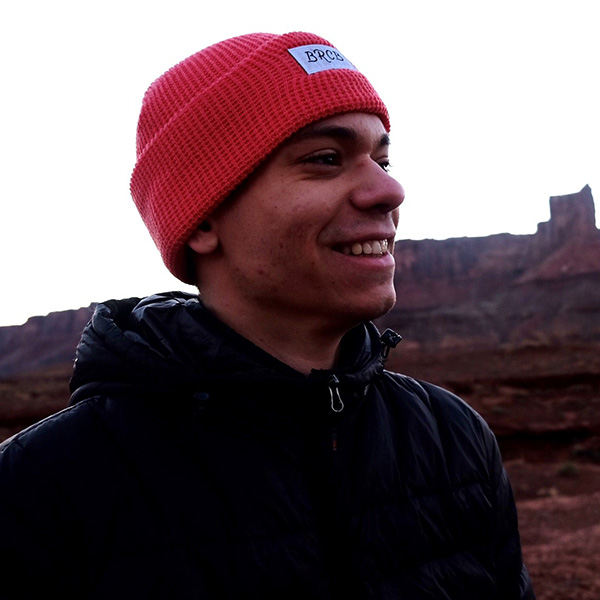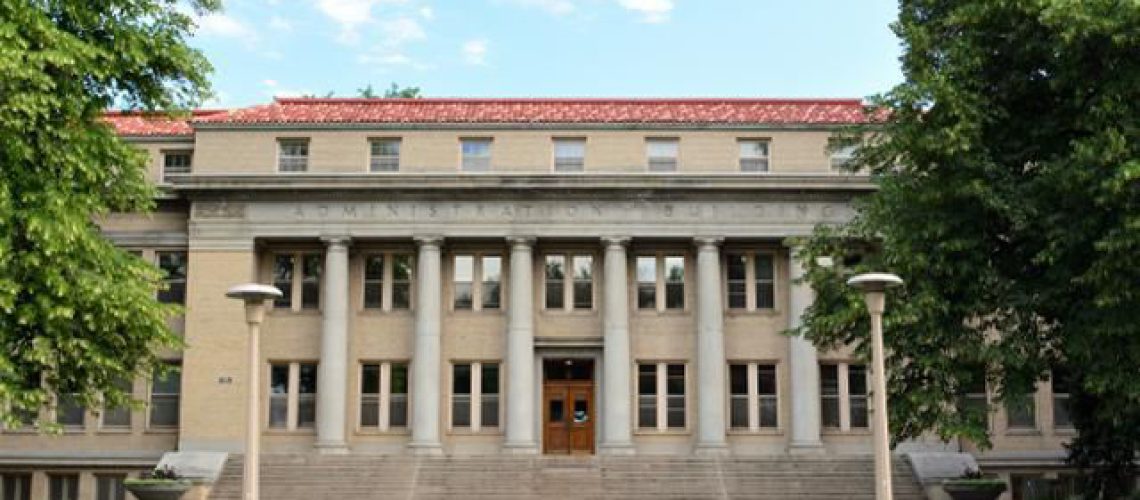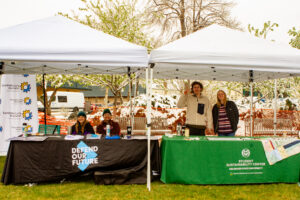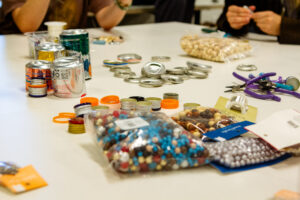This story was originally published during the Spring Semester of 2022 by Sam Nordstrom.
In a small conference room inside the School of Global Environmental Sustainability, housed in Johnson Hall at Colorado State University (CSU), a group of students sits at four tables, arranged so that they face one another. The students drink tea, enjoy snacks, and converse with one another, smiles painting their faces. The quiet hum of voices, broken occasionally by laughter, fills the room until someone speaks up and silences the room.
Sam Moccia, a student and the director of the Undergraduate Chapter of the Student Sustainability Center (SSC), calls the first sustainability Coalition meeting to order. Representatives from all student sustainability organizations, including the Zero Waste Team, the Associated Students at Colorado State University Environmental Affairs Department, Defend Our Future, and more joined the meeting to brainstorm ways to improve sustainability on campus and discuss collaborative projects.
Colorado State University prides itself on sustainability. In fact, the university is ranked as one of the best performing doctoral institutions in sustainability, according to a video posted by the university on YouTube. This is no easy feat, and it is vital to recognize that students are the roots of sustainability at CSU. Student-led organizations and projects are largely responsible for transforming CSU into the sustainable campus it’s marveled for today.

The Student Sustainability Center

Moccia said the Student Sustainability Center was founded in 2009 by Diana Wall, the Inaugural Director of the School of Global Environmental Sustainability. According to Moccia, Wall wanted to give students support to pursue sustainability projects beyond the scope of what the administration does. The SSC website states the student-run center is part club, part resource center, and an “incubator” for student sustainability clubs, teams and projects. As the director, Moccia also serves as a project manager. Using the resources provided by the SSC, Moccia said he works with students passionate about sustainability to pioneer creative projects that represent student sustainability efforts on campus.
“[The SSC] was this idea that there can be a space [for sustainability] on campus supported by faculty, staff members, and people on our campus,” Moccia said. “Instead of just talking about the issues, and just teaching us about sustainability and climate change, they would have the audacity to give students support, wisdom and direction to try and find solutions.”
Graduate students also partake in student sustainability. Jacob VanderRoest, the director of the graduate chapter of SSC, said the graduate chapter focuses a lot on community outreach in Fort Collins and using graduate research to improve sustainability. VanderRoest said he created the grad chapter as a space for graduate students to get involved in sustainability. According to VanderRoest, students play a very important role because there are a lot of student-led organizations that drive sustainability on campus.
“Students have a much bigger voice than we think we might have,” VanderRoest said. “Once a student suggests an idea, it gets a lot of traction and excitement. We kind of have the perception of, ‘Oh, we’re just students, how much of a difference can we make?’ But a lot of the big sustainability initiatives on campus are often initiated and driven by students.”
Collaborating With Clubs and Projects
Moccia said the center’s job isn’t to do sustainability work covered by clubs and students but to support the students doing the work. The Zero Waste Team is a student-run club that organizes its own events and projects focused on waste management and receives support from the SSC.
“Zero Waste is a great example of a club that we have always been side by side with,” Moccia said. “We support [them] in all our work because they do amazing stuff. They do one specific thing, helping with waste management. [They’re] really good at that but would not have the kind of scaling it does if it wasn’t for really passionate students who care a lot about this stuff.”
The Divestment Campaign is another student-started sustainability project on campus that is challenging CSU to divest from fossil fuels, according to their website. Moccia said divestment was always an idea on the SSC whiteboard; however, they were waiting for students to pick up the project. Eventually, some did. Moccia said the SSC is a facilitator that helps build and support student projects that they may not necessarily be a big part of.
“That’s what’s so exciting,” Moccia said. “When these groups come together, when we find out that someone’s working on a project that we were attempting to run at…we immediately think about how we [can] combine these efforts and support it.”
Always Evolving
Moccia said that before the COVID-19 pandemic, the SSC was a giant social atmosphere for students. But now, the center is much smaller now, and rather than considering itself a club, the SSC works to support various teams of students focusing on numerous sustainability projects.
“I don’t know if students really have the time or energy for those social atmospheres nearly as much anymore,” Moccia said. “But what they do have the time for, what they make the time for, what we all need, is a place where you can see an idea, a concept, or a line of text on a whiteboard and say, ‘Maybe we can do something here that makes a little impact.’”
Ultimately, Moccia said that when you give CSU students tools, a budget, time and support to try new things to make campus more sustainable, they do it really well.
“For a student who knows they want to do something about climate change, that’s the space we’ve come to develop,” Moccia said. “The reason [CSU] got this [sustainable] reputation is because students come here with that idea in their mind. They see the ways that CSU itself might be struggling to fulfill that idea, and they make it happen.”






